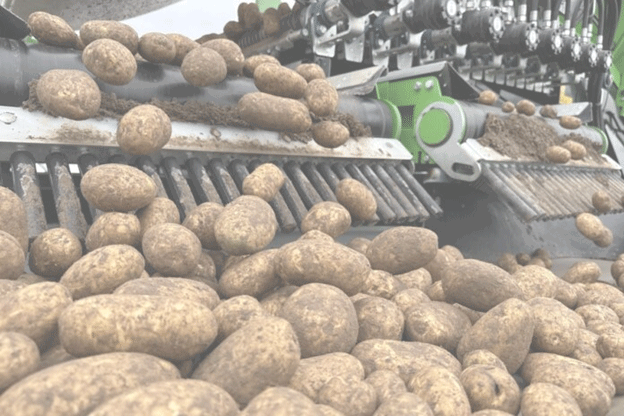Potatoes are a staple crop in Poland, and understanding the dynamics of their cultivation is essential for farmers, agronomists, agricultural engineers, and industry stakeholders. As we move through 2024, it is crucial to examine how the area dedicated to potato farming has evolved, the factors influencing these changes, and what this means for the future of Polish agriculture.
Potato Cultivation Area in Recent Years
Over the past few years, the area dedicated to potato cultivation in Poland has seen fluctuations. According to data from the Agency for Restructuring and Modernization of Agriculture (ARiMR), the potato cultivation area has varied significantly from 2020 to 2023.
- 2020: The area under potato cultivation was 185,767.99 hectares.
- 2021: This year saw a peak with a record 203,796.26 hectares, marking the highest cultivation area in the observed period.
- 2022: There was a notable decrease, with the area shrinking to 181,597.03 hectares.
- 2023: The area saw a slight increase to 182,213.79 hectares, although it remained below the levels of 2021.
Potato Cultivation Area in 2024
As of 2024, the area dedicated to potato farming in Poland has increased to 192,858.69 hectares. This figure represents the second-highest cultivation area in the period from 2020 to 2024, surpassed only by the 2021 peak. The increase in 2024 is significant, reflecting a rebound from previous years’ fluctuations and indicating a renewed interest or need for potato production.
It’s important to note that these figures are based on declarations made by producers in their direct payment applications. The data collection is ongoing, and there might be minor adjustments as farmers have the opportunity to update their submissions.
Factors Influencing the Trends
Several factors contribute to the variations in potato cultivation area:
- Market Demand: Fluctuations in market demand for potatoes, both domestically and internationally, can significantly impact cultivation decisions.
- Climate Conditions: Weather patterns and climate conditions play a crucial role in determining the feasibility and productivity of potato farming. Recent years have seen unpredictable weather, which affects planting and yields.
- Economic Incentives: Subsidies and financial support from government programs can influence farmers’ decisions to increase or decrease their cultivation areas.
- Technological Advances: Improvements in farming techniques, including better pest control and irrigation methods, can also impact the area under cultivation.
The increase in the area dedicated to potato cultivation in Poland in 2024 to 192,858.69 hectares reflects a positive trend for the industry, indicating a recovery from previous fluctuations. However, it remains crucial for stakeholders to monitor the evolving dynamics, including potential adjustments to the data and ongoing influences such as market conditions and climate impacts.
For farmers, agronomists, and agricultural engineers, staying informed about these trends is essential for making informed decisions regarding crop management, resource allocation, and long-term planning. As the industry adapts to changing conditions, continuous support and innovation will be key to sustaining and enhancing potato production in Poland.

